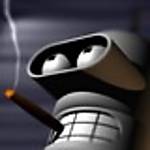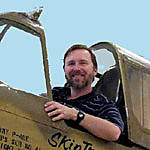When airfields were built, it was intially with what was at hand. Even the Japanese on Guadalcanal quarried locally, rolling with a steamroller. AFAIK, their airfield complex at Rabual only had one paved runway.
In China, the B-29 fields were rolled limestone, quarried and crushed, then rolled with 18t rollers, by local coolies.
In the PTO crushed coral was the norm. As available, oil would be put down but mainly the coral was "raw"--hence all those nicely sandblasted to bare metal props and leading edges we modelers like to put on our birds! Muddy places like Henderson Field and New Guinea were liberally covered with Marston Mat, PSP (Pierced Steel Planking), which was also put over the coral base as available. It was widely used in North Africa, muddy Sicily ansd Italy, and France after D-Day.
Heavy bombers flew off of these runways. The concrete and asphalt surfaces seemed to be ALMOST exclusive to England. However, some of our 8th & 9th AF fighter units flew off of sod field in England, at least until constrction crews could catch up.
The Axis, lacking the Allies' capacity for luxurious facilities, seemed mainly to fly off of dirt and gravel. I recall a story (Horrido, or The Blonde Knight of Germany--Eric Hartman?) about one of the Luftwaffe's top units in Russia, after retreating west, landing on a paved runway--nobody was used to it and the first few planes' landing gear collapsed due to applying soft-field proceedures to a hard surface.
Of course, note photos of Japanes planes esconced in the cocanut groves. We did it too.
Model railroad track ballast makes nice coral/gravel. Take your pick:
Various Ballasts White Ballast How did this effect the looks of the airplanes? Desert and Pacific coral field threw up clouds of dust--airplanes can be dusty--until the daily Pacific deluge washes them off--streaky airplanes.
The dust and coral sandblasts every leading edge.
Muddy fields--mud splatters around the wheels and gear. You can put foodprints on the walking areas.
























